Decorating your cake and eating it too
Some vignettes spotlighting sweet parallels between art, art lab practice, and dessert
Discover the fun of cake decorating
When I was a kid, one of my great joys was looking through my mom’s cake decorating books. When I got older, I convinced her to let me ice my own birthday cakes.
I remember the process, trying to be delicate and tidy with small, childish hands; shoveling sticky pink icing into a waxy muslin piping bag. I practiced making icing shapes with the nozzles on wax paper, drawing shaky lines and petals. Then, I’d carefully press the metal star shaped tip against the cake my mom had iced. Squeezing the icing from the bag, I’d attempt to make something artful, rolling the bag as I worked. I’d try not to squeeze too close to the nozzle, making sure the icing did not plop out from the bag opening and make a gloppy mess.
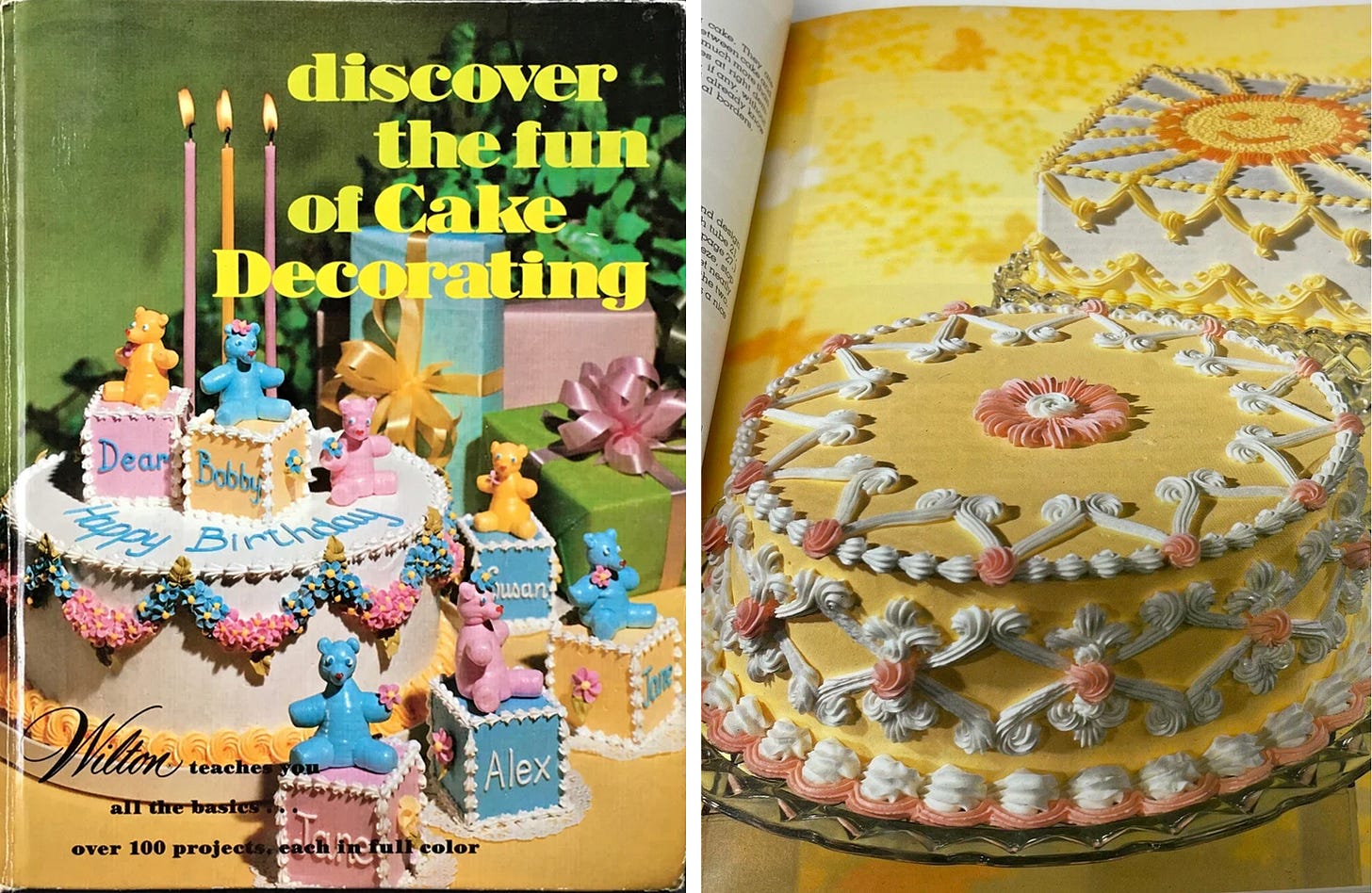
Displaying (non)food like sweets
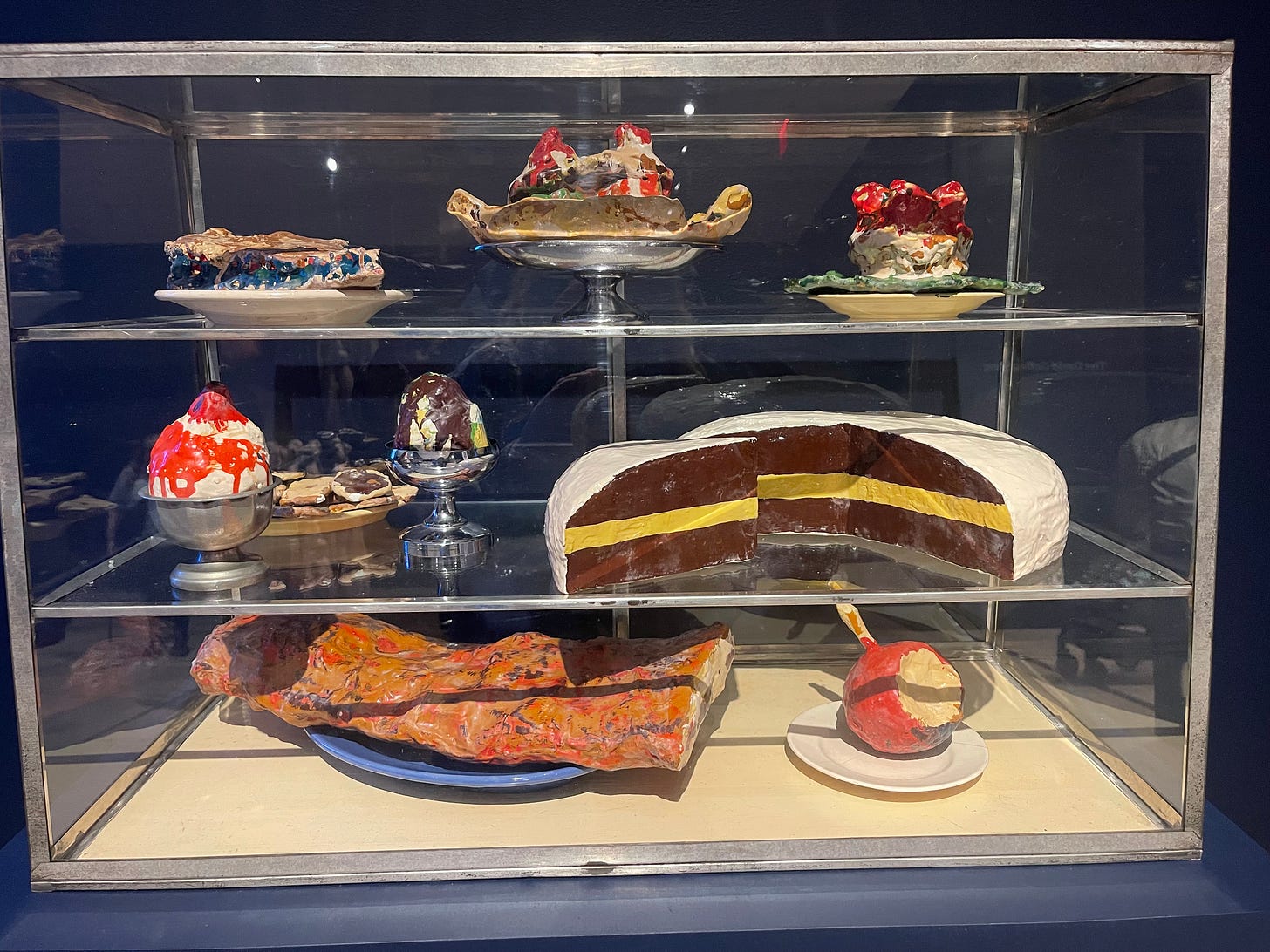
The inspiration for this post came from a visit I paid to MOMA last week (more on this in another post). I found myself studying Claes Oldenburg’s “Pastry Case, I” from 1962. The pastry case contains sculptures of ice cream sundaes, blue berry pie, a candy apple with a bite taken out, and strangely, what looks like a slab of salmon or some sort of meat on the bottom shelf. The objects are made from burlap and muslin soaked in plaster, painted with enamel, placed in metal bowls and ceramic plates and displayed in a in glass-and-metal case.
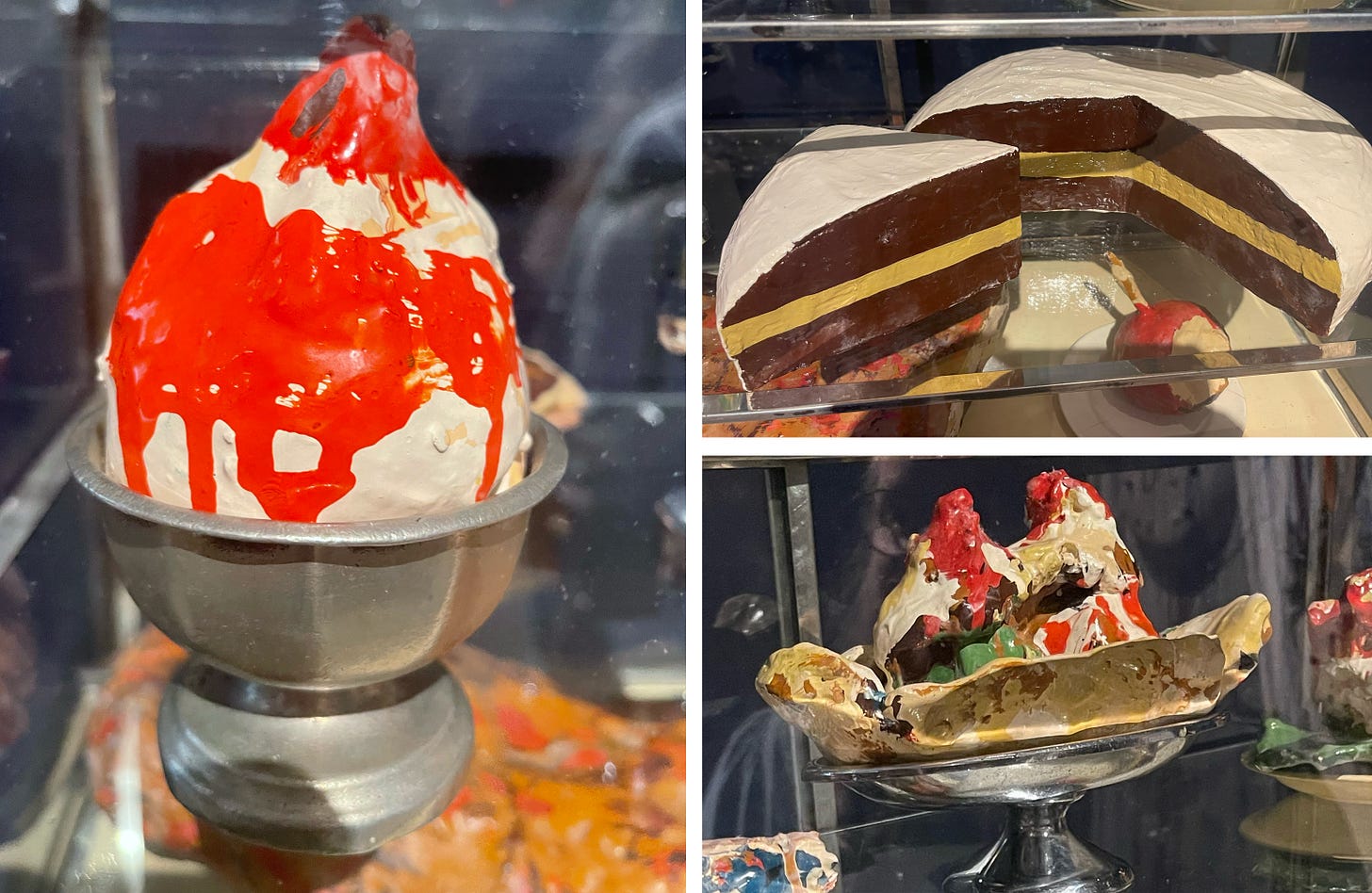
From the MOMA’s online entry about the work:
In a 1969 interview, Oldenburg described this tension as a way of “frustrating expectations”: “The food, of course, can’t really be eaten, so that it’s an imaginary activity which emphasizes the fact that it is, after all, not real that it’s art, whatever that strange thing is of doing something only for itself rather than for function.”
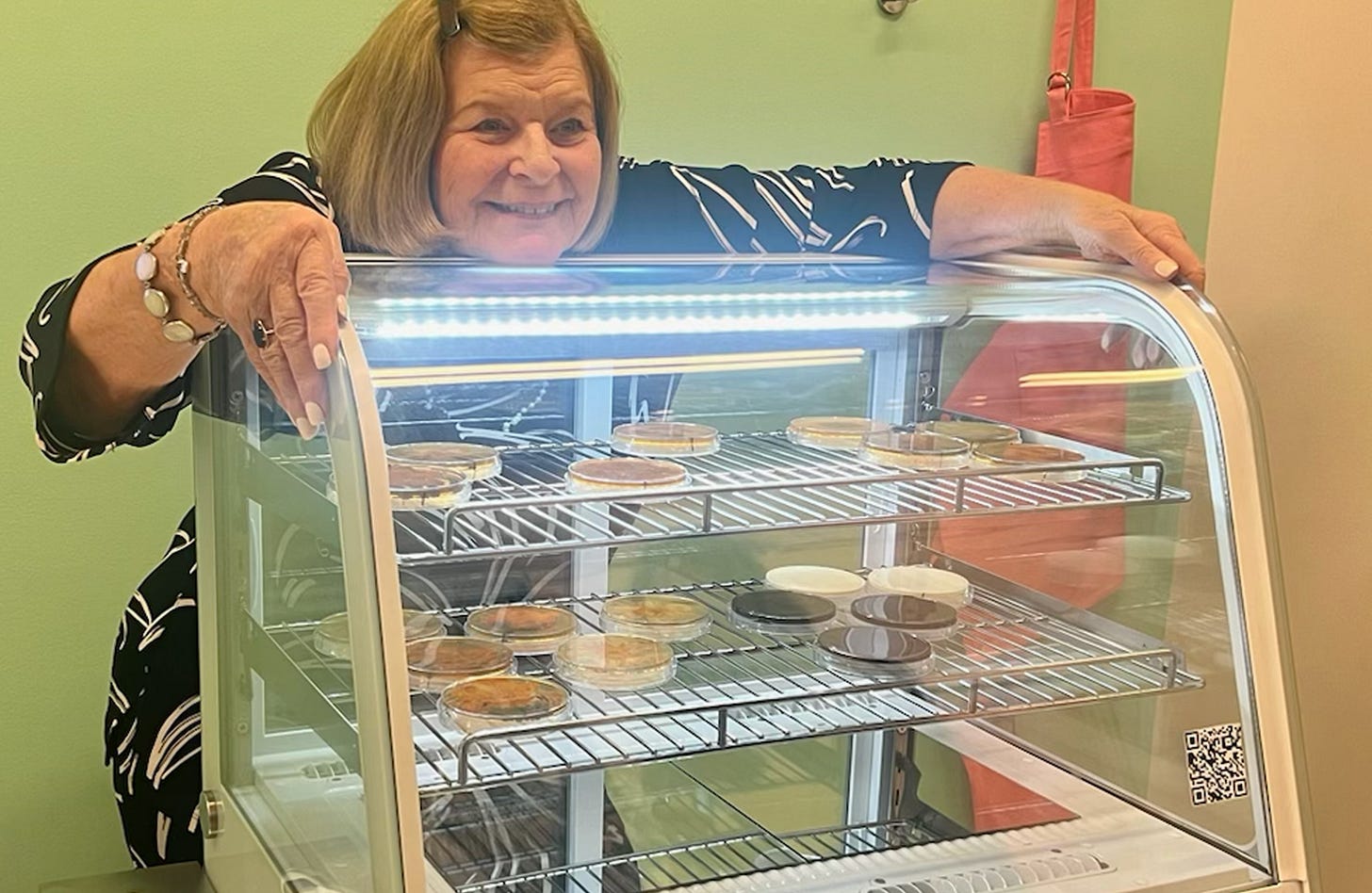
Viewing this piece made me think of my own preferred display mechanism for my Petri dish art, a refrigerated bakery display case. The microorganisms I work with are bioengineered yeast, Saccharomyces cerevisiae (s. cerevisiae), or baker’s yeast. The yeast is designed to produce vibrant colors with DNA from sea creatures, bacteria, and the beta carotene (β-carotene) metabolic pathway, which is found in sweet potatoes, red peppers, and carrots.
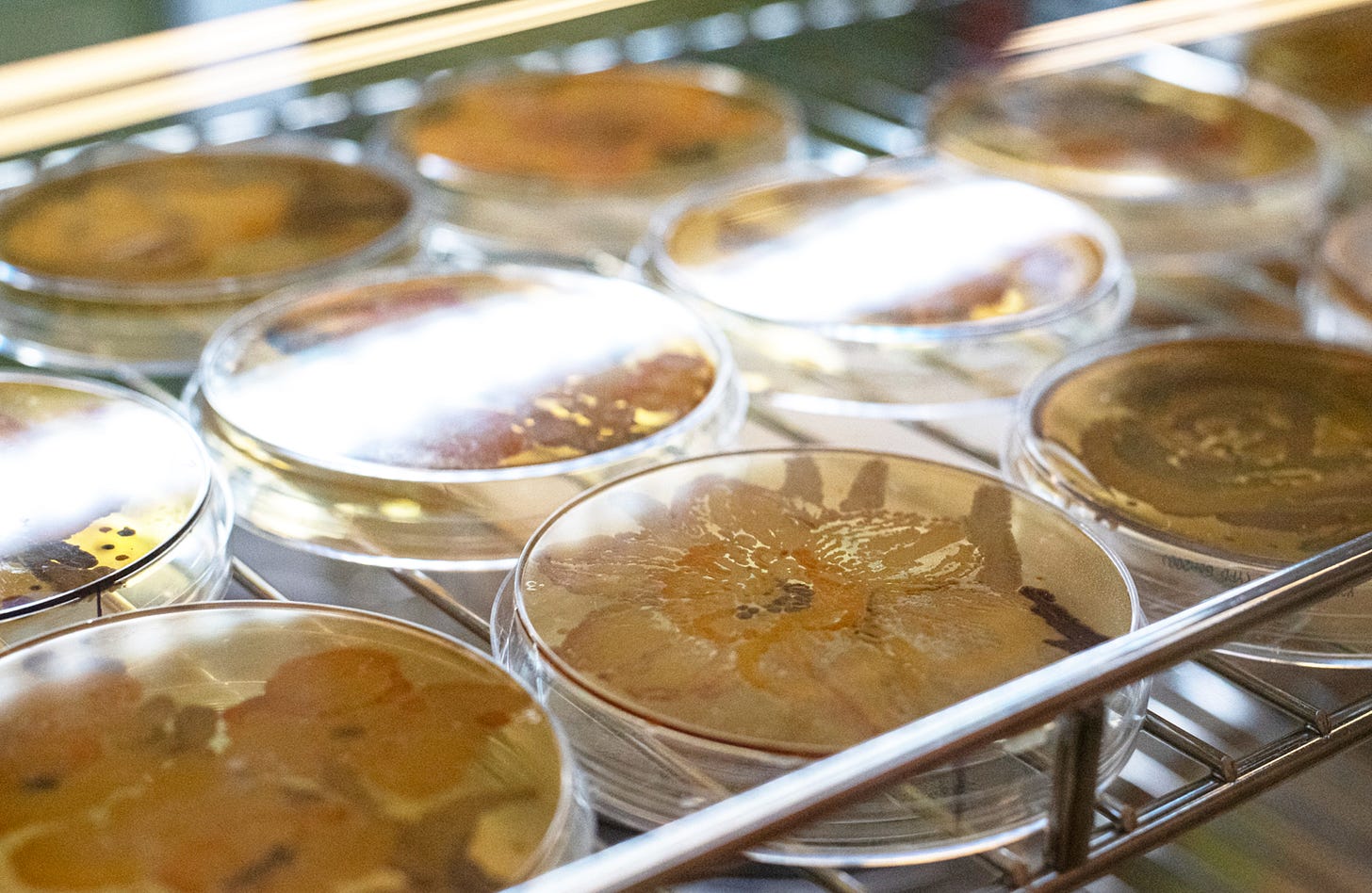
My Petri dish yeast paintings gave off the illusion of French pastries, tarts or custards. One could imagine the flowers sitting atop a caramelized shell of a rich custard instead of agar.
Many people have complicated or outright hostile, negative feelings about GMOs in food, and I sought to display these objects in a way that would preserve them (through refrigeration), but also speak to their use in food; s. cerevisiae is also known as “Baker’s yeast” and “Brewer’s yeast” and used in baking.
VitaYeast, VitaBread, and Golden Bread
An iGEM (international Genetic Engineering Machinery Competition) project from Johns Hopkins University (JHU) in 2011 addressed the boundries of unease around GMOs, with a project called “VitaYeast.” In the context of controversy around Golden Rice (engineered to produce vitamin A) the JHU iGEM team created yeast rich in β-carotene that could be baked in bread and provide vitamins that way. “Golden Bread,” a lab based on this project, is included in the BioBuilder curriculum.
Time to make the doughnuts
I admit, I crave doughnuts occasionally when I’m working on yeast Petri dish paintings. The smell of the yeast mixed with light, sweet scent of the warm sugary dextrose sometimes sends me salivating to Dough in Manhattan.
My doughnut craving brings to mind a project from 2016 by Taylor Caputo, an alum of the Integrated Product Design Program at UPenn. I became aware of this project via a piece written by Orkan Telhan, “Design.bio: Bringing biology to the design studio” in O’reilly’s BioCoder magazine (which I also wrote some pieces for). “Microbial Doughnuts” uses the “Golden Bread” protocol from BioBuilder to create doughnuts rich in Vitamin A. From the article:
“Caputo’s microbial donuts at this stage are proof of concepts. They have not been evaluated for their taste. Due to regulatory requirements, the donuts cannot be consumed within the University of Pennsylvania, where the experiments are designed.”
Cake in the face? C'est dommage!
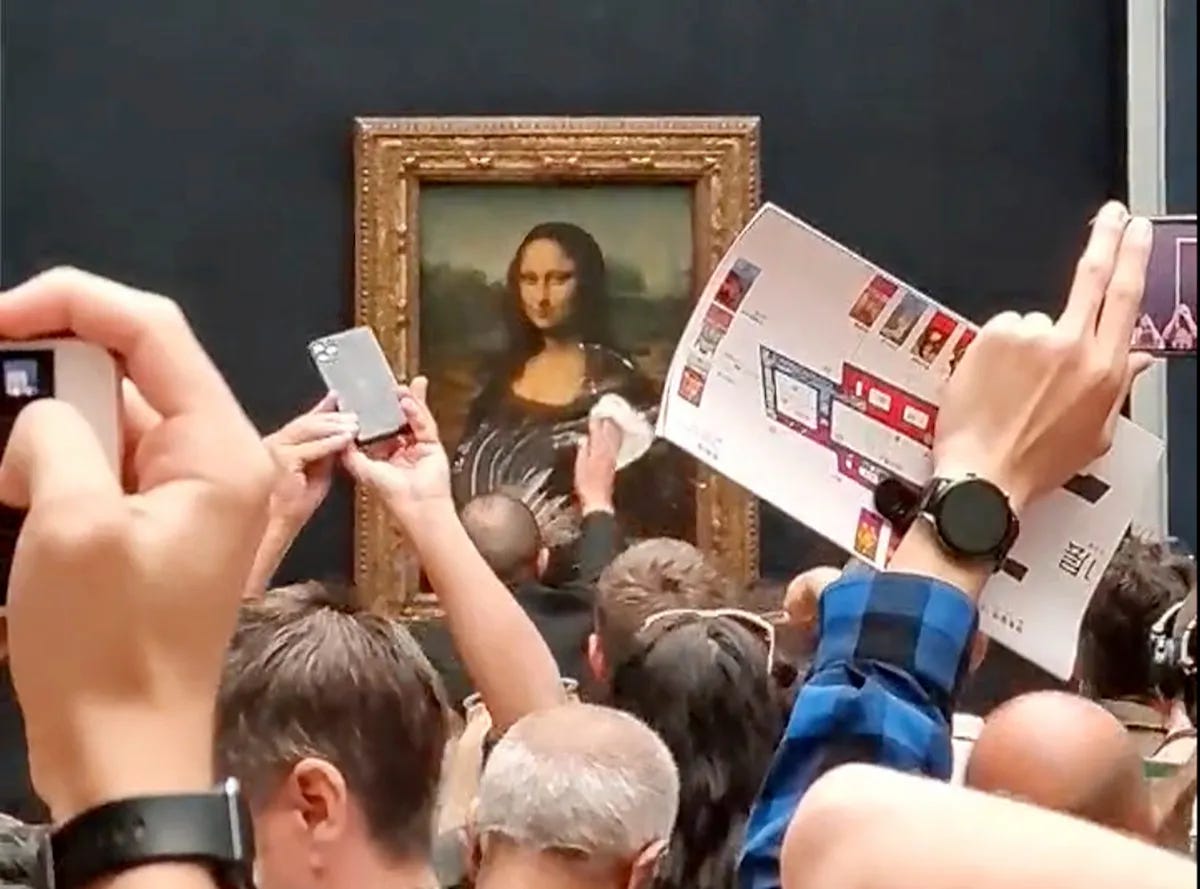
The BioBAT show where I debuted my bakery display case went up in October of 2023, a time when art news outlets were reporting a lot of vandalism towards works of art in museums. The year before, a protester at the Louvre in Paris smeared a cake in the face of Mona Lisa, with a desperate plea to the art world to “Think of the Planet.” I wondered how my works would be received in the context of these protests.
Mostly, what I received were curious inquiries about the science, the process, and how I arrived at Petri dish art as a medium. The only defacement any of my work received, was a fingerprint made by a little boy who was visiting BioBAT with his mom. I suppose his curiosity got the better of him. I wasn’t at BioBAT that day, but I am told he reached up and touched the Petri dish before anyone could catch him. His little finger left an irrevocable mark; the yeast doesn’t grow back, but I decided damage from curiosity was okay.
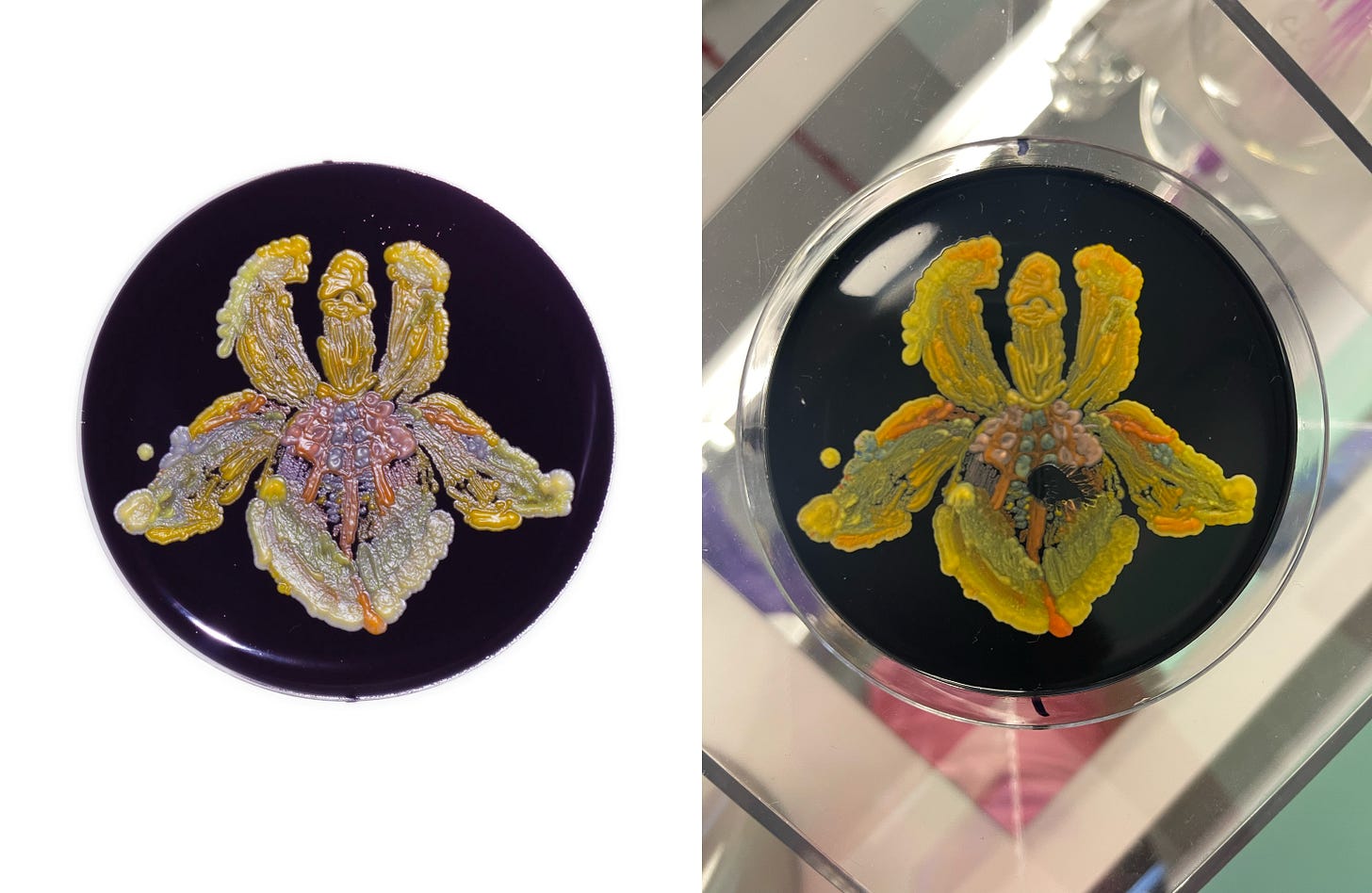
Eat all the cake
I’ve always liked Wayne Thiebaud’s cakes, and I wrote a paper about him in high school. Thiebaud’s cakes—perched atop bleached cardboard circles—give the illusion they are in an array ready to be plucked for consumption. We are confronted with a paradox of choice: do we choose the cake that looks the most appealing? One with complicated icing? Would one of those have the best flavor? Or are the simpler looking cakes concealing a hidden layer of chocolate ganache, raspberry jam, or something lemony?
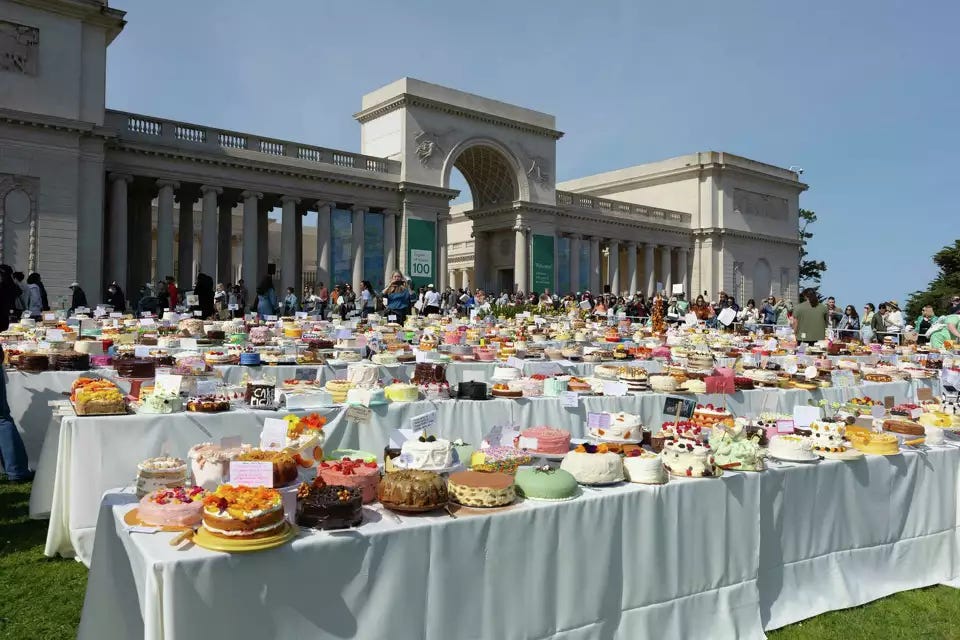
Somewhat addressing this conundrum, this past March the San Francisco Museum of Art hosted its second cake picnic at the Legion of Honor. Inspired by Thiebaud’s works, 1,387 cake picnic participants brought in cakes. Each participant who brought a cake got a bakery box in return that they could fill with all the cake they wanted. To quote the public programs manager Maria Egoavil (via the SF Chronicle), “Cake decorating is another art form,” she said. “It’s about creating something that sparks joy.” It does indeed spark joy to see all that creativity depicted in cake form. No doubt some sparks fizzled post-picnic, due to bloated, distended stomachs, filled with cake and sugary, colorful frosting!
Back to cake decorating…
As I was writing this, I was reminded of the Cure’s 1980 anthem to domestic placation, “So What” from “Three Imaginary Boys.” The lyrics expose existential angst around love, loss, and fear of being replaced, intermingled with clipped, passionless marketing language from a leaflet touting a cake icing and decorating set:
“Each set includes
A turntable
A nine inch icing bag
With six high definition nozzles and adaptor
With a fifteen inch food decorating bag
With three piping nozzles”
The words encourage the longing would-be cake maker to “ORDER NOW,” our wailing protagonist Robert Smith caves: “So please send me icing and decorating sets; I enclose a cheque and postal order number.” I wonder if Robert Smith actually ordered the set…
The icing on top
As the idiom goes, “you can’t have your cake and eat it too.” This has never made much sense to me, but I suppose it means that once you eat it, it’s gone. Or, maybe as the cake picnic participants can attest to, it all turns to shit.
I asked my mom if she remembers me decorating my own cakes. She doesn’t. My sister “kinda” does. Perhaps the reason nobody remembers this like I do, is that I must have done an awful job and mom took over the task.
I remember my mom’s basket weave cakes and how time consuming they were (see above). I never endeavored to ice one of those. They were so precise and methodical. Perhaps I’ll try one soon. If I do, will I be able to eat it? After all that work? I’ll keep you posted.
Did this post make you want cake? Thanks for reading. I welcome thoughts below.





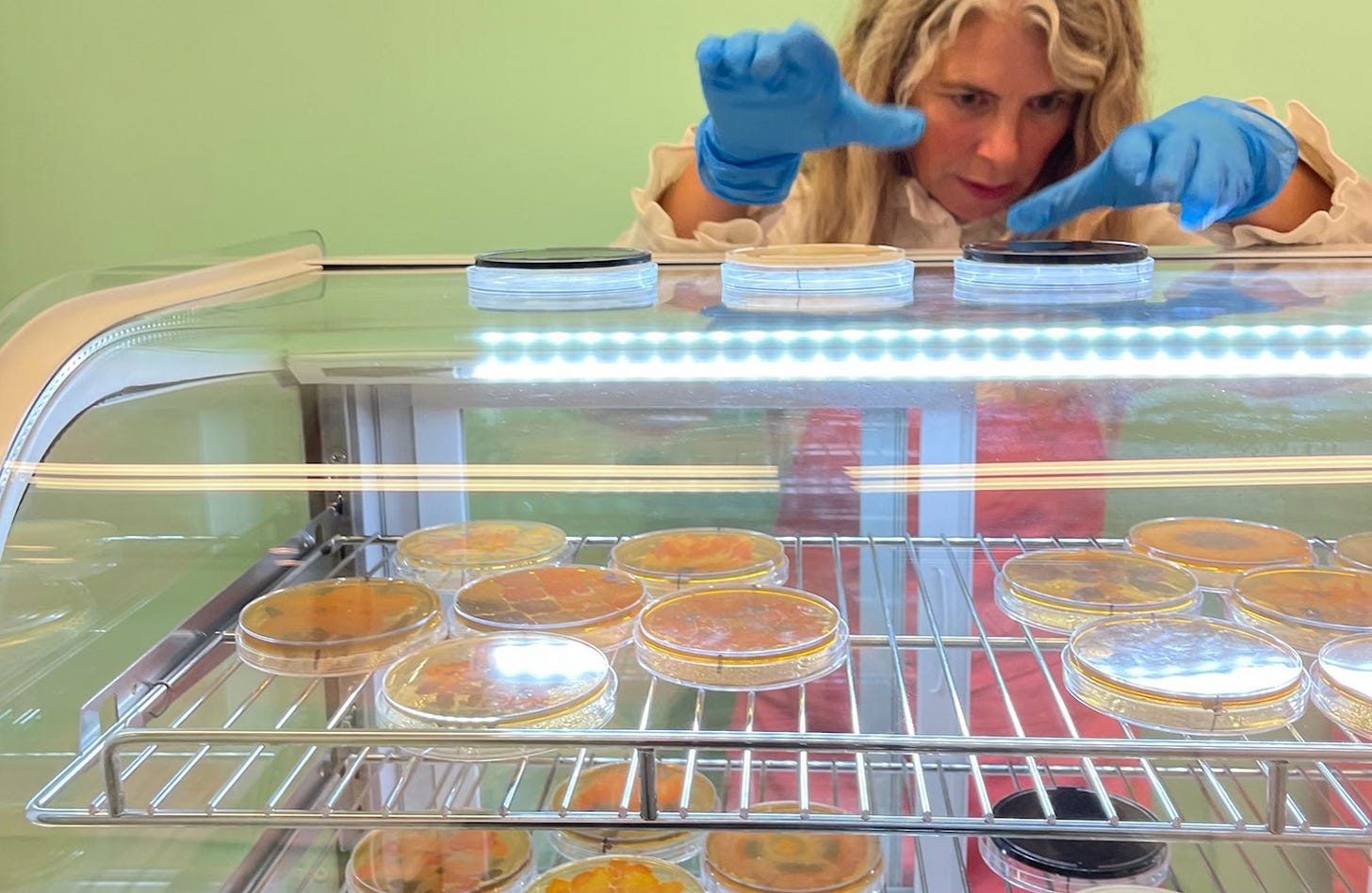
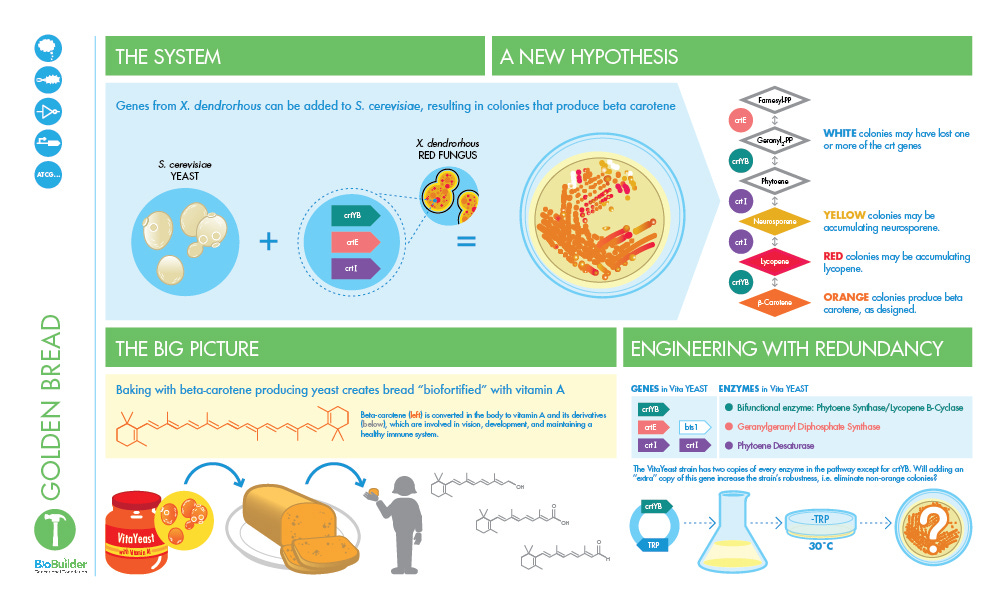

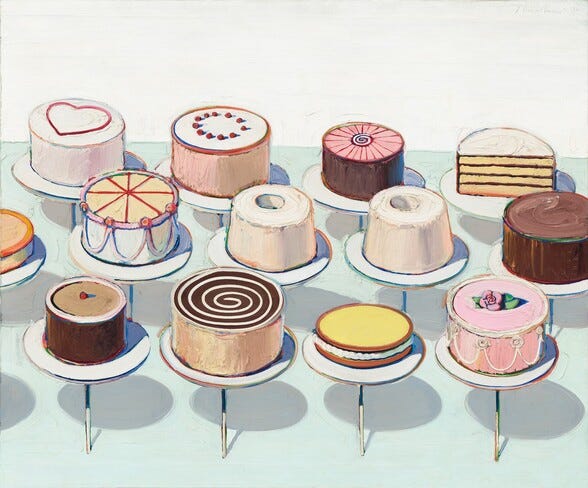
once again a tour de force. Thank you for sharing these thoughts!
Love the connections 🎨⛓️🧁💗